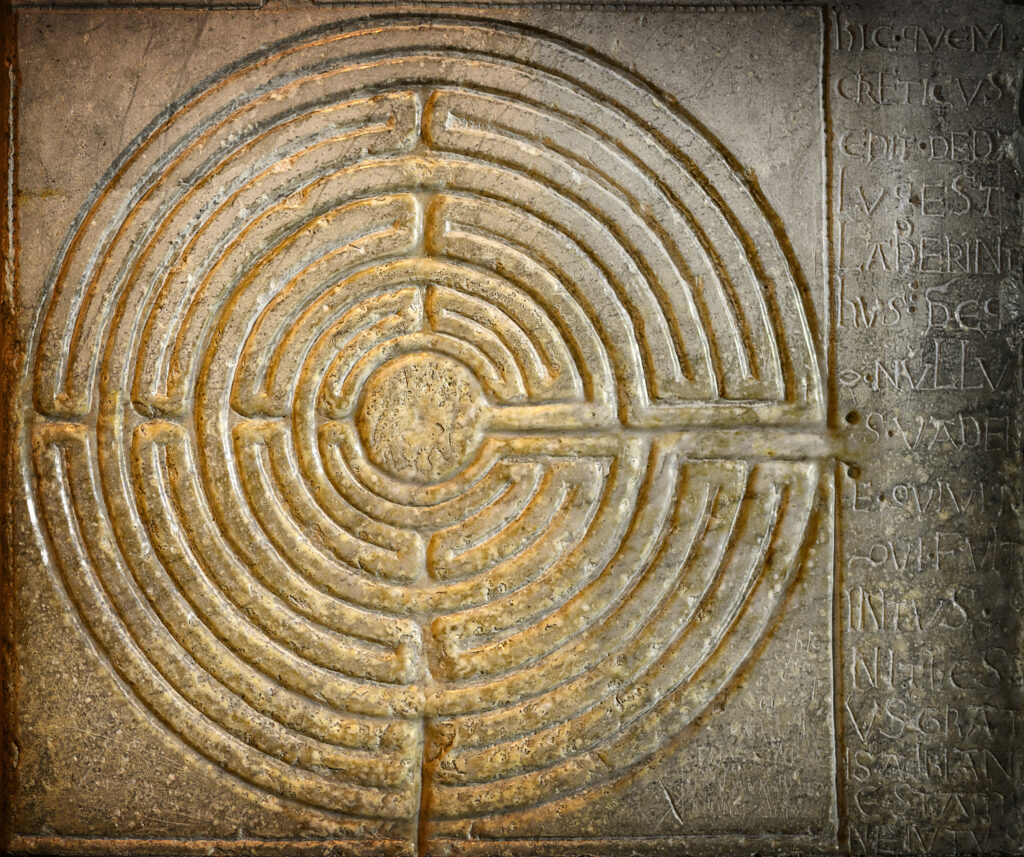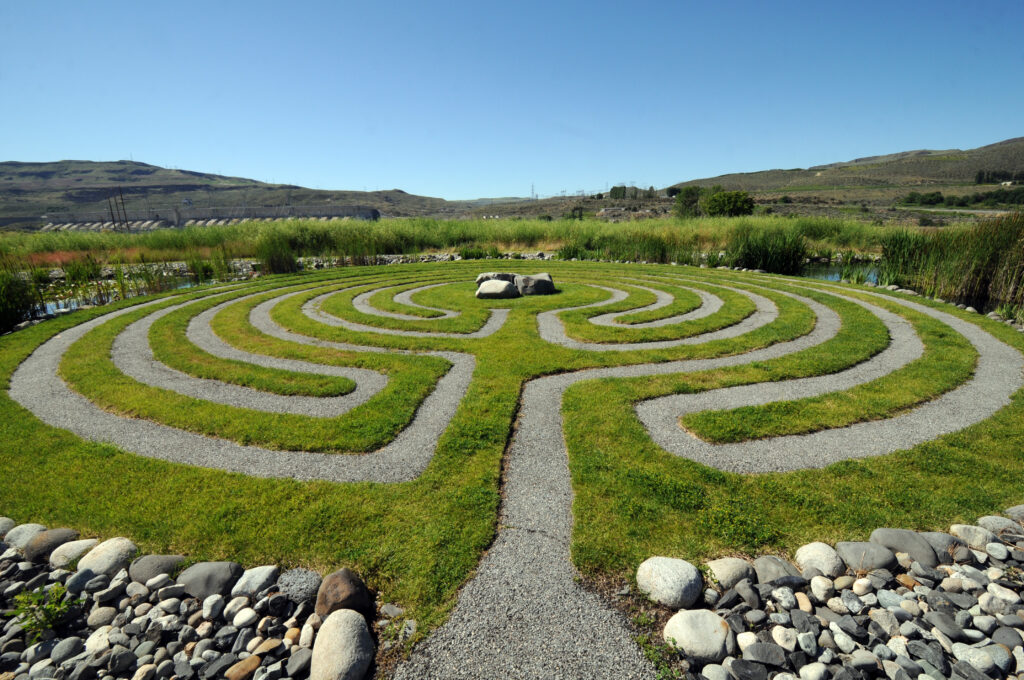Approaching your Healthcare Institution about Getting a Labyrinth
By Robert Ferré
Institutions are not likely to act on a suggestion such as, “Why don’t we get a labyrinth?” It is usually necessary to supply supporting information to show the many returns on investment that labyrinths have to offer. Research regarding the benefits of labyrinth walking is available on the research page of the TLS website as well as by contacting the TLS Research Chair for information.
In addition to supporting research and all of the above-described benefits, those who want to approach their healthcare institution about getting a labyrinth can also consider the following strategies:
- Invite the decision-makers to view the TLS DVD: Labyrinths for Our Time; Places of Refuge in a Hectic World.
- Provide examples of other hospitals that have labyrinths and use them effectively.
- Note that labyrinths are well established in other areas of business and industry.
- Invite decision-makers to see labyrinths as a valuable part of complementary and alternative healthcare.
- Show that labyrinths offer a way of being progressive that is attractive to patients and therefore good for business.
- Do the footwork: make a proposal, with design, cost, location, funding strategies, etc.
- Recruit an inside advocate: a chaplain, a nurse, or someone to help promote it; creating a committee is best.
- Bring a portable labyrinth or create a temporary labyrinth on site for administrators to experience first hand.
- Raise the funds to pay for the labyrinth, often through a non-profit auxiliary group (“Friends of . . . “).
- Approach the architect of the new hospital expansion and renovation, to add a labyrinth to the plan.
- Provide finger labyrinths for the waiting rooms.
- Put up informative posters with beautiful labyrinth photos.
- Finally, be patient. The process of getting a labyrinth into an institution or public setting can sometimes take years of education, promotion, and fund raising.
Probably the most powerful and convincing argument is to show how labyrinths fit into and benefit the healing process and environment. To that end, the TLS DVD mentioned as the first suggestion above is available to support making a stand for labyrinths in a variety of community settings. Please contact the Executive Director, for more information on how to obtain a copy. In addition, the Labyrinth Enterprises website below has a list of some 200 hospitals with labyrinths as well as examples and photos.
Support and networking for those interested in labyrinths is also available through attending The Labyrinth Society’s Annual Gathering, an event that provides an opportunity to meet labyrinths enthusiasts from all over the world, attend labyrinth-centered workshops and learn from labyrinth experts. The Labyrinth Society also sponsors World Labyrinth Day on the first Saturday of May. To find out when and where World Labyrinth Day events will be held, visit the Labyrinth Society Events Calendar. To find a labyrinth near you, visit our Labyrinth Locator.
Prepared for The Labyrinth Society web site by Robert Ferré, labyrinth designer, builder, author, workshop leader, and event facilitator. Visit the Labyrinth Enterprises web site for more information.
Benefits of Labyrinths in Healthcare Settings
By Robert Ferré
Providing a labyrinth in a healthcare setting can support and enhance the life of the institution and its mission in a variety of different ways.
For patients who are able to walk or ambulate by wheelchair, the labyrinth offers many benefits. Those who are not ambulatory can experience the same benefits by using a hand-held finger labyrinth:
- A quiet place where the simple act of walking offers a proactive way to ‘do’ something towards getting better.
- An inviting way of getting exercise outdoors in nature.
- A clearly non-medical environment where patients can share time with family and friends.
- A place where patients can let go of the issues related to illness and injury.
- A sacred spot where patients can express intentions and hopes for the future.
- A perfect spot for a “get well” ceremony.
A reduction in the stress related to being ill, an improved attitude about coping with ill health, an interest in participating in treatment, the return of hope or the inner peace necessary to complete life’s business before dying are just a few of the responses possible for patients using the labyrinth.
Many of the patient benefits listed above also apply to the staff of an institution. For the healthcare organization, the labyrinth provides a clear-cut employee benefit; enhancing any health and wellness programming by offering a quiet haven where staff can deal with the pressures of work in a positive way:
- Walking the labyrinth prior to operating or caring for patients provides a way to clear the mind and focus attention.
- A place for healthy ‘time out’ – an alternative to a smoking break.
- Personal space after being with many people.
- A calm environment in which to prepare for dealing with challenging situations.
- A place to regain balance and perspective.
- A tremendous resource for pastoral care ministries.
Access to a labyrinth in a healthcare environment provides family and visitors a place to retreat, regroup and renew. Family and friends can walk the labyrinth:
- To calm and focus themselves before meeting with doctors or seeing loved ones.
- As an alternative to sitting in the emergency room for hours.
- Something to do together with the patient.
For the institution itself, labyrinths are good for business. They offer a cost effective means of being progressive and integrative.
Labyrinths do not necessarily reflect any religion or culture and so appeal to people from all backgrounds and walks of life. Most importantly, labyrinths invite both patients and staff to tap their inner resources; offering a way of addressing the spiritual, emotional, and psychological aspects of healing. They are a perfect holistic complement to the already abundant technological and medical expertise available in our healthcare institutions:
- Demonstrating that the institution cares about the whole person, whether patient or employee.
- Balancing science and technology with complementary care.
- Providing an excellent form of outreach to the community for promoting wellness.
- An inviting oasis that adds unexpected beauty to a clinical environment.
- A perfect center in which to retreat, commune, celebrate, honor, and remember.
- Cost effective — costs less than a typical piece of equipment.
- The center of a healing garden or outdoor space.
Though the many benefits of walking a labyrinth have attracted researchers looking to quantify the effects, the power of the labyrinth comes from the invitation one receives to slow down and go within to a place where science and technology end; a place where one has access to their ‘inner healer,’ and the return to wellbeing is placed back in the hands of the one who desires to heal.
Prepared for The Labyrinth Society web site by Robert Ferré, labyrinth designer, builder, author, workshop leader, and event facilitator.





